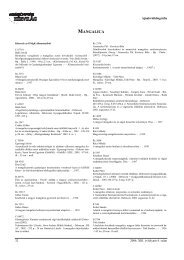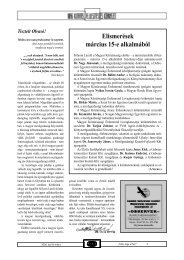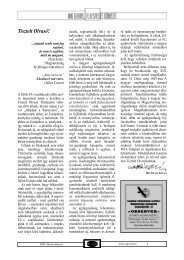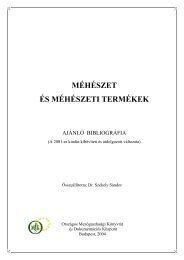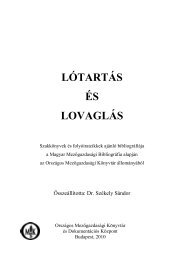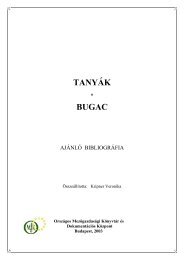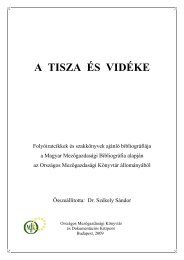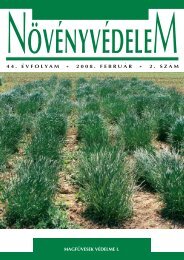hUNGARiAN AGRicUltURAl RESEARch
hUNGARiAN AGRicUltURAl RESEARch
hUNGARiAN AGRicUltURAl RESEARch
You also want an ePaper? Increase the reach of your titles
YUMPU automatically turns print PDFs into web optimized ePapers that Google loves.
Figure 2. Conidia germinated on the petal’s surface and penetrate across the cuticle<br />
and also stops the pathogen in<br />
other flower parts. According to<br />
Holb (2003) all parts of the Prunus<br />
flowers are sensitive but the<br />
sensitivity of the stigmata was not<br />
emphasised.<br />
Results of the infections carried<br />
out at the Department of Genetics<br />
and Plant Breeding under natural<br />
and artificial (in vitro) conditions<br />
indicate that penetration of the<br />
pathogen has never occurred<br />
through the stigmata. Moreover,<br />
stigmata of the totally destroyed<br />
flowers remain alive for the<br />
longest time. Artificially infected<br />
stigmata of the emasculated and<br />
hand pollinated flowers also<br />
showed fully resistance in the<br />
experiments. According to the<br />
Figure 3. Destroyed petal tissue shows the way of the mycelium<br />
growth<br />
results obtained from the natural<br />
and artificial infection study it was<br />
established that the start point of<br />
infection are petals. Furthermore,<br />
the germinated conidia easily<br />
could penetrate through the cuticle<br />
of the petals (Figure 2, 3, 4). This<br />
assumption was partly confirmed<br />
by the tissue structure of floral<br />
organs. The resistance of the<br />
emasculated and forced pollinated<br />
flowers may be due to the removal<br />
of petals and anthers.<br />
Study on the mechanism of<br />
infection was completed by the<br />
investigation of the flower of Prunus<br />
salicina, P. cerasifera, P. dasycarpa<br />
and P. mume. All of the tested<br />
Prunus flowers were destroyed by<br />
the fungus but stigmata survived for<br />
the longest time.<br />
In case of the resistant<br />
genotypes inoculation of the<br />
flowers on twigs wasn’t succeed<br />
by the injuring of twig’s phloem.<br />
Contrary to that spreading of the<br />
disease in the twigs tissue of<br />
sensitive cultivars were very<br />
quick. For further testing of the<br />
resistance the artificial infection<br />
was carried out on the shoots. .<br />
Hungarian Agricultural Research 2009/3–4 19



